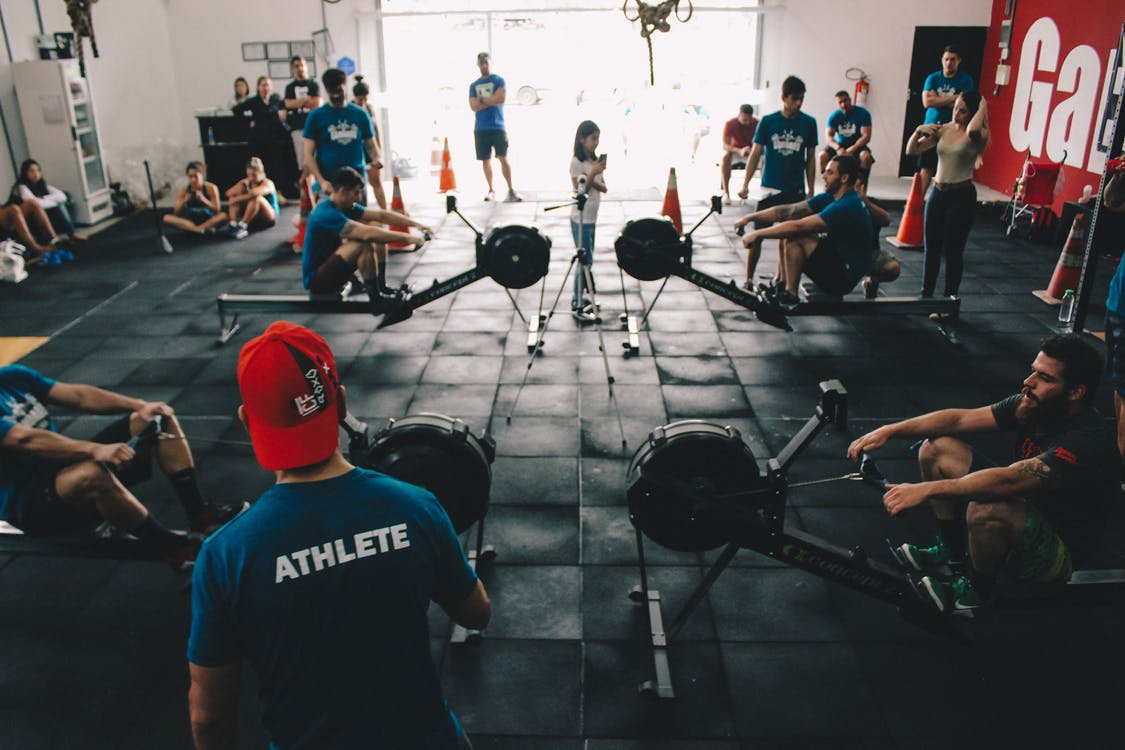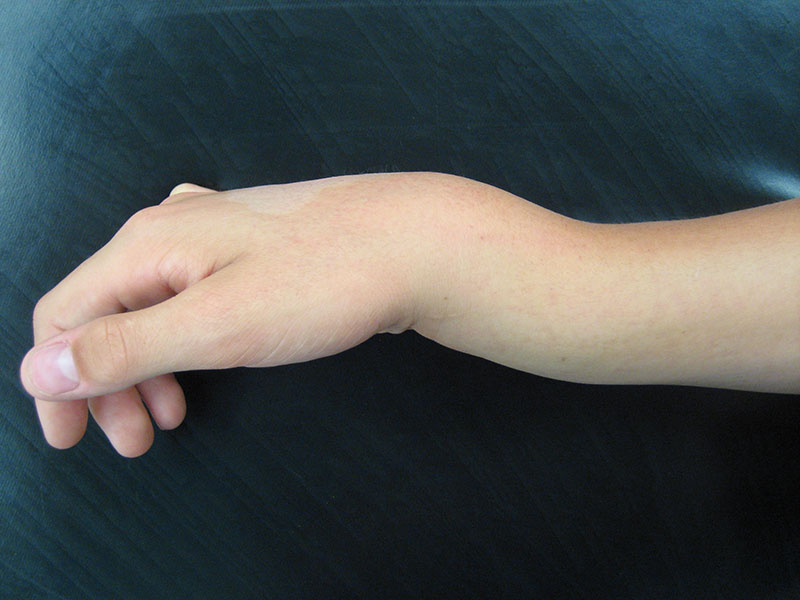People dedicate time to the gym for a variety of reasons. There are whole host of different motives behind working out but it’s safe to say that injuring the hand or wrist certainly isn’t one of them.
The purpose of this article is to provide a brief overview regarding the common causes of hand and wrist injuries in the gym, followed by a detailed explanation of some of the injuries themselves. We ask the questions, how can one detect the injury before causing further damage to oneself, and what’s the best plan of action to manage the resulting pain?
Common causes of hand and wrist injuries in the gym
They say you’re only one bad rep away from a serious gym injury. That makes sense when one considers the fundamental dangers of the exercises themselves. The hauling, heaving and straining provides a challenging battle against the equipment – and only upon victory will one begin to reap the benefits of their efforts. In pursuit of these challenges one can lose sight of those glaring hazards, and thus, they also begin to protect their hands and wrists less.
Lifting weights, for example, is a strenuous task that applies obvious pressure to the wrist joints. One can often become over-prioritised with the physically-draining effect that weight training has on the biceps and triceps, it can be very easy to overlook the conditioning of hands. Let’s face it, certainly no one goes into the gym work on their wrists! We have to keep them safe.
We have highlighted five key causes of injury that gym users need to be wary of, especially when operating equipment that uses the hand and wrist joints.
Inadequately warming up and cooling down
Self-explanatory, mandatory, but often forgotten or neglected. There are tendons in the hand and wrist that will remain tight and constricted unless one works them into action by increasing the blood flow to the area. Without an adequate warm up there will be a higher risk factor surrounding injuries to the hand or wrist.
Try these wrist exercises as a warm up both in the gym and at home. The benefits of these exercises are threefold; not only do they help prepare the wrist for a session at the gym, but they also develop the core strength conditioning which will help one to use the joint more efficiently during exercise. As well as that, they can also be implemented into a rehabilitation strategy when recovering from a hand or wrist injury.
Overfacing yourself
Using too much weight when strength training has high risk of injury potential.
Gym goers will continually up the weights to set new targets and continue with muscle growth. The key to gaining is, of course, that extra few pounds of challenge. However, one needs to respect the boundary between challenge and overstepping the boundaries.
How will one know if they’re biting off more than they can chew? Well, the telling signs will always be in the arms. If one needs to heave or judder when lifting the weight, or begins to lose control of the weight when lowering it down, then they are clearly not in full control of the equipment.
The key to safety is keeping every action in one swift motion. Struggling? Most gyms will have dedicated members of staff who can assist you with your form.
Training too often
Overtraining is a very real issue. It can directly, and indirectly result in hand and wrist injuries for those that frequent the gym. Overtraining drains the body’s total strength level, and counteracts and conditioning work that may have been done previously.
Depleted, feeble hands and wrists will lead to injuries born out of fatigue.
Know yourself and have a respect for your capabilities. It is recommended that training sessions are kept to a frequency of 2-4 on a weekly basis, with sessions lasting no longer than an hour and a half including warm ups and cool downs.
Concentration dips
It could be said that lapses in concentration are a result of training too frequently. Trying to exercise the arms when distracted, distant or tired is a complete recipe for disaster. A quick YouTube search on the form of the elite bodybuilders will show you their uninterrupted, hyperintense concentration.
Of course, 99.9% of gym users aren’t aiming for anywhere close to that level; but in the interests of protecting your hands from injury, we recommend focusing on the task at hand always.
Poor technique
We can’t get everything right all the time. Perhaps the most common cause of hand and wrist injury in the gym is simply getting the technique wrong.
Performing exercises incorrectly can lead to all sorts of pulls, rips and tears and these can set your progress back after months of work. It’s important to remember here that each human body can withstand different loads and stresses based on a variety of factors. It is vital that the technical aspect of an exercise is perfected before one tackles the higher weight loads. Safety first, always.
Common types of hand and wrist injuries in the gym
The most commonly dealt with injuries are wrist sprains, as well as fractures to the wrist and fingers. It is advised that one contacts their doctor immediately if they believe they have a fracture in the hand or wrist area.
Pain in the hand or wrist can occur suddenly (acute) or it can be more persistent and constant (chronic) because of a gradual onset injury.
Acute injuries force sudden onset pain. They are usually the result of an outstretched arm to break a fall, a sudden bend or twist to the wrist, or traumatic injury. Damage can befall the ligaments, bones and tendons in the hand and wrist.
Wrist sprains
Wrist sprains present themselves when one tears any of the ligaments in the wrist. There wrist joint is an intricate one, there are eight carpal bones that connect the radius and ulna to the hand, as well as a series of ligaments and tendons that hold the joint together. There is plenty of potential, therefore, for a wrist sprain. Sharp pain will begin immediately upon the time of injury, and one should expect to notice swelling in the affected wrist.
What to do in the event of a wrist sprain?
Rest the wrist and apply a cold compress to the swollen area. Remember to apply the cold compress in ten-minute intervals per hour, anything more may result in ice burns. Going forward, one can bandage the wrist to apply compression to the swelling. This will help protect the damaged ligament as it repairs, whilst reducing the swelling. There are a number of resources available that provide DIY exercise to help manage the pain and rehabilitate the wrist from home.
Finger sprains
Finger sprains present themselves when one tears any of the ligaments in the finger. Typically, a finger is sprained when it is bent in an unnatural manner. Sharp pain will begin immediately upon the time of injury, and one should expect to notice swelling in the affected finger.
What to do in the event of a finger sprain?
Rest the finger and apply a cold compress to the swollen area. Remember to apply the cold compress in ten-minute intervals per hour, anything more may result in ice burns. Going forward, one can wrap the afflicted finger in a compression bandage to help reduce the swelling and protect the ligament while it heals.
Wrist and finger strains
Not to be confused with sprains, strains are caused when one twists or pulls a muscle or tendon in the wrist or finger. The resulting pain can be either acute or chronic in nature, with the latter born out of trauma injury. Strains that bring chronic pain are usually due to a persistent over-use of a muscle, which is why it is essential that gym frequents use the equipment correctly. Persistently incorrect use of the wrist joint can also lead to arthritis, and you can read more about that here.
Wrist fracture
Any break at the end of either the radius or ulna (the two long bones in the forearm) are deemed as a wrist fracture. Wrist fractures can be a simple break, or a more complex issue if the injury has affected the carpal bones or ligament attachments. There are two common forms of wrist fracture that occur inside the gym.
Colles fracture
A colles fracture is a break in the radius (forearm) on the thumb-side of the wrist. One can expect to experience instant, throbbing pain that increases upon trying to move the wrist joint. Rapid swelling is natural, to the point where the wrist may appear slightly deformed in nature. Colles fractures occur, most commonly, when one outstretches their arm to break a fall. Look for medical attention immediately in the case of a suspected wrist fracture.
Scaphoid fracture
The scaphoid is one of the carpal bones that make up the wrist joint. It is the most commonly fractured of the carpal bones, especially among those who are athletically active, and it is often caused by falling onto the outstretched hand. Symptom wise, one can expect to experience immediate pain and rapid swelling (predominantly at the back of the wrist.) This pain may subside somewhat, before the injury begins to affect one’s grip and control.
Much like wrist sprains, early treatment for a wrist fracture would revolve around ice therapy to help deal with the immediate swelling. Remember to apply the cold compress in ten-minute intervals per hour, anything more may result in ice burns. Going forward, an x-ray will be required for one’s doctor to fully assess both the extent and location of the fracture. Further treatment will be applied accordingly, but, the wrist will be placed into a plaster cast for a set duration of time to immobilise the joint and aid the rehabilitation process.
Carpal tunnel syndrome
Carpal tunnel syndrome is a term given to a group of symptoms that present when the median nerve, upon passing through the wrist and into the hand, is put under uncomfortable pressure. The carpal tunnel itself is located on the palm side of one’s wrist – made up of carpal bones and ligaments, the median nerve travels through the tunnel on its connection to one’s hand. You can read an extended description of the syndrome here. Essentially, the flexor tendons in the wrist can swell because of continued overuse. Applying a wrist splint can help alleviate the symptoms but it will also limit your proactivity in the gym, so it is recommended that you seek out specialist consultation if you have any concerns.
Worried about a niggling pain in the gym? Make contact here and we’ll do our best to help.




